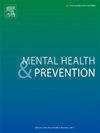Teaching mental health in the classroom: A mixed-methods implementation evaluation of a mental health literacy program in elementary schools
IF 2.4
Q2 Medicine
引用次数: 0
Abstract
Objective
Mental illnesses are the largest disease burden for adolescents, affecting 20 % of youth in Canada. As mental health needs arise earlier and with greater prevalence, it is essential to work upstream and prepare youth before psychological distress emerges. When implemented in the classroom as part of the educational curriculum, Mental Health Literacy (MHL) fulfills these goals as a universal response to the societal and development stressors experienced by youth.
The aim of this implementation evaluation was to explore the experience of educators delivering the Elementary Mental Health Literacy Resources (EMHLR) during a 4-month period across Canada. The specific objectives were to identify the individual (educator) and organizational (district) level barriers and facilitators to delivery of the EMHLR to improve future implementation of the program.
Methods
An explanatory sequential design used data from an existing feedback survey and qualitative data was gathered from group interviews with Educators. Findings were integrated using the RE-AIM framework to identify barriers and facilitators and develop considerations for implementation
Results
System level barriers included the pre-existing stigma around mental health, competing priorities for classroom time, and cultivating buy-in from leadership. Individual level barriers included the time and knowledge to teach MHL. The flexible design of the EMHLR curriculum and specific implementation strategies were seen as facilitators. Mental Health Literacy offers language for youth to communicate about their experience clearly and accurately.
Conclusion
The EMHLR curriculum offers an evidence-based and adaptable means to build the MHL of youth across Canada. This holds potential for improving youth mental health but requires intentional implementation strategies to be successful.
课堂上的心理健康教学:小学心理健康扫盲计划的混合方法实施评估
客观疾病是青少年最大的疾病负担,影响了加拿大20%的青少年。由于心理健康需求出现得更早、更普遍,因此必须在上游开展工作,使青年在心理困扰出现之前做好准备。作为教育课程的一部分在课堂上实施时,心理健康素养(MHL)作为对青年所经历的社会和发展压力的普遍反应,实现了这些目标。这项实施评估的目的是探索在加拿大各地为期4个月的教育工作者提供基本心理健康素养资源(EMHLR)的经验。具体目标是确定个人(教育工作者)和组织(地区)层面的障碍和促进因素,以实现EMHLR,以改善该计划的未来实施。方法采用解释性序列设计,使用现有反馈调查的数据,并从教育者的小组访谈中收集定性数据。研究结果使用RE-AIM框架进行整合,以确定障碍和促进因素,并制定实施考虑因素。结果系统层面的障碍包括围绕心理健康的预先存在的耻辱,课堂时间的竞争优先事项,以及培养领导层的支持。个人层面的障碍包括教授MHL的时间和知识。灵活的课程设计和具体的实施策略被视为促进因素。心理健康素养为青少年提供语言,使他们能够清楚、准确地交流自己的经历。结论EMHLR课程提供了一种基于证据和适应性的方法来建立加拿大青年的MHL。这具有改善青少年心理健康的潜力,但需要有针对性的实施战略才能取得成功。
本文章由计算机程序翻译,如有差异,请以英文原文为准。
求助全文
约1分钟内获得全文
求助全文
来源期刊

Mental Health and Prevention
Medicine-Psychiatry and Mental Health
CiteScore
2.10
自引率
0.00%
发文量
22
审稿时长
24 days
 求助内容:
求助内容: 应助结果提醒方式:
应助结果提醒方式:


